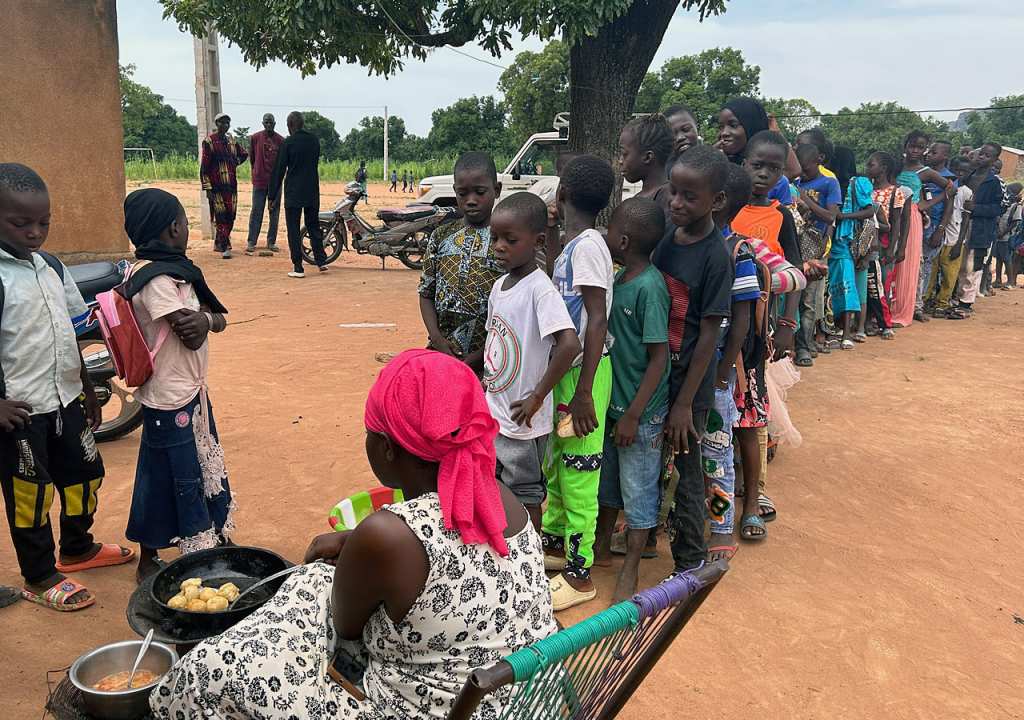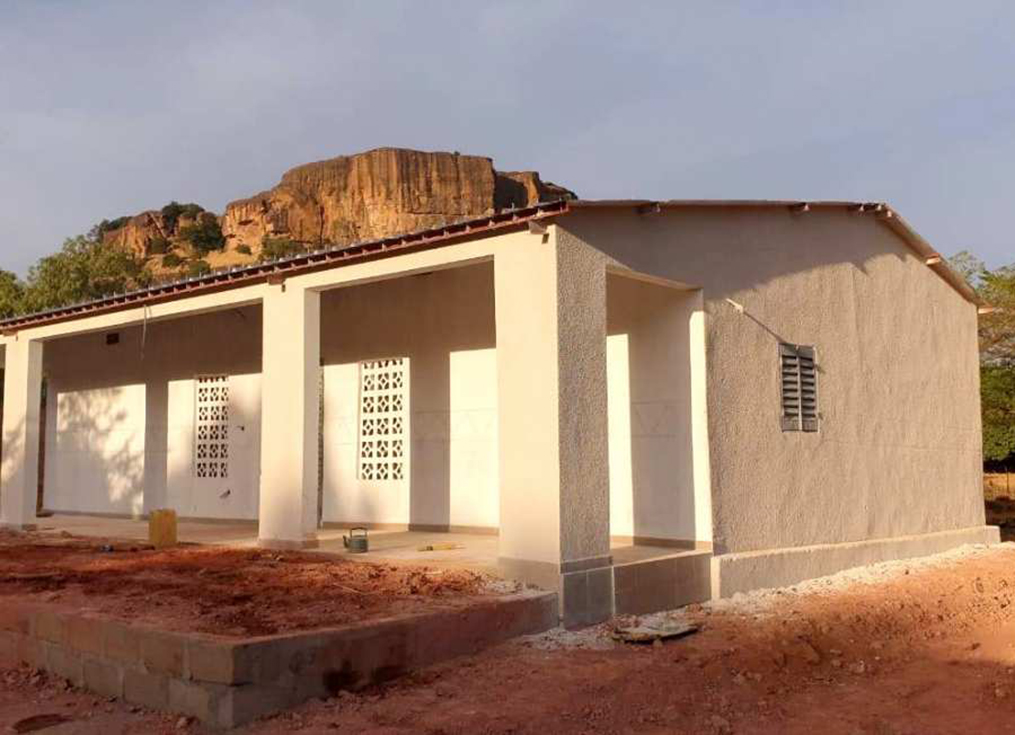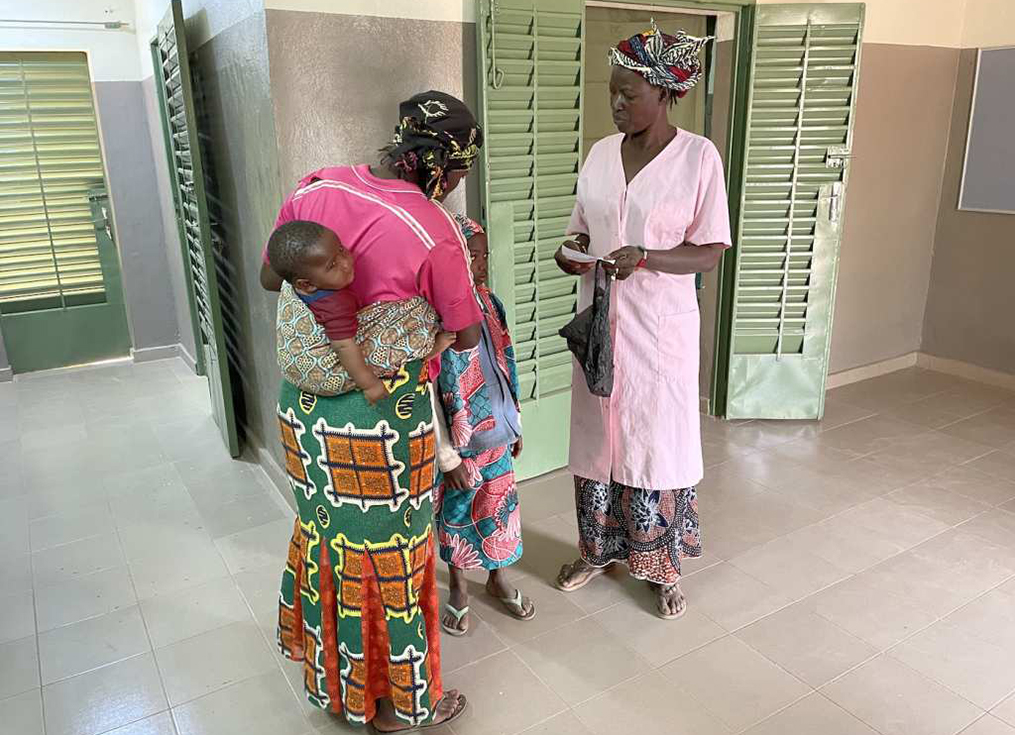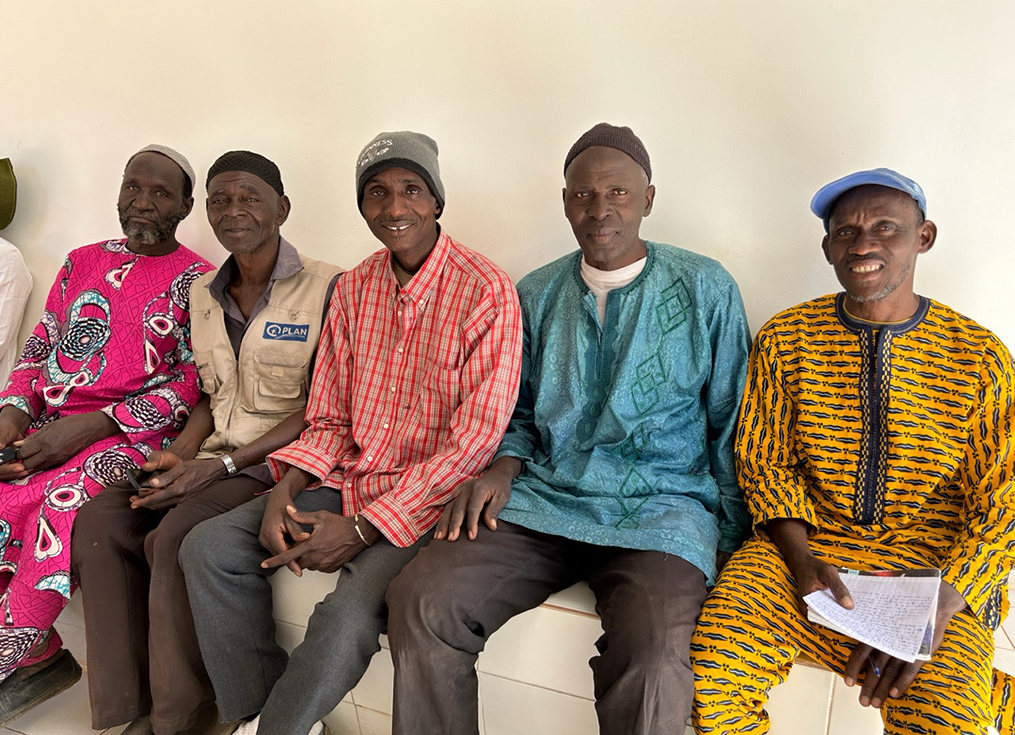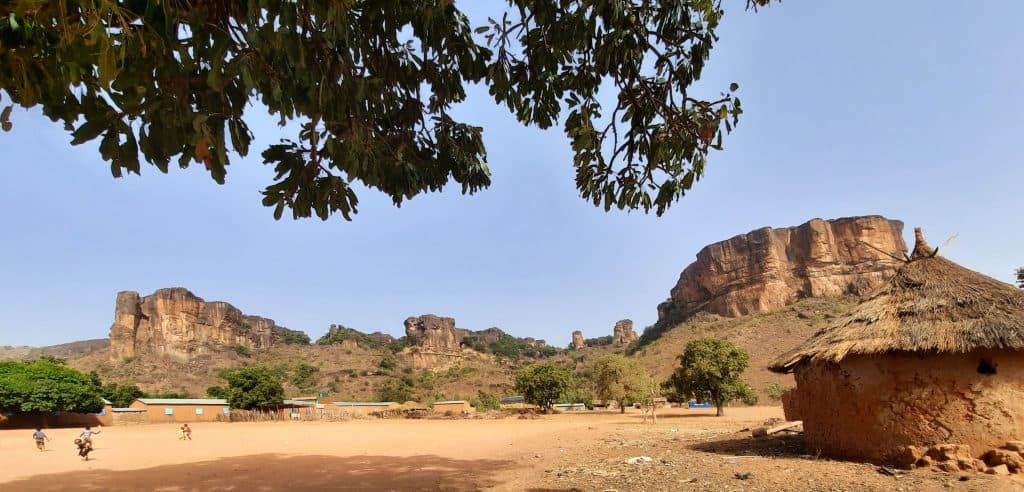
Intergration into the region
The work of CAAS is based on transparent cooperation and partnership with the local authorities and people of the region. Ownership of the land used was deliberately not acquired. Instead, agreements with the local authorities ensure its use for an indefinite period. Two of CAAS’s four properties, the Campus and the Annex, have been made available to CAAS for indefinite use by the rural municipality of Siby in return for a symbolic lease. For Kalassa, the free transfer of the Complexe Agricole (5 hectares) and the school garden (1 hectare) by the family of village chief Kalifa Konaté was a decisive step that opened the way for joint development.

> Lesen Sie hier mehr über den historischen Hintergrund des CAAS
Development plan: Infrastructure and utilities
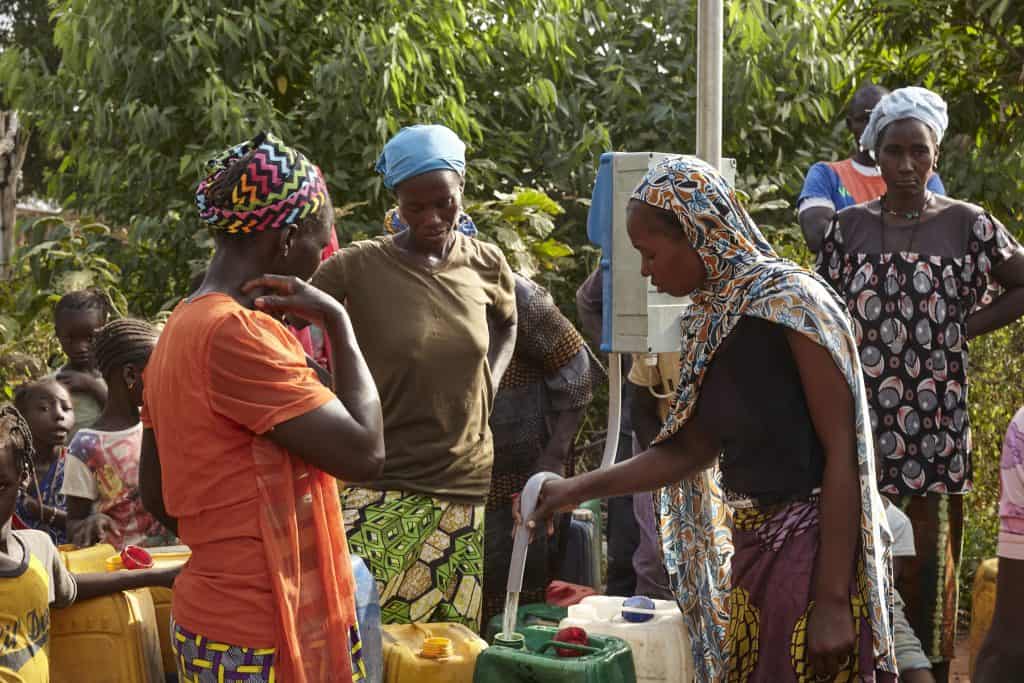
Roads: An essential prerequisite for the electrification and water supply of the village was a village development plan, for which all residents had to agree on property boundaries and the layout of squares, streets, and alleys.
Water: The CAAS water facilities (drilled wells, submersible pumps, water towers) ensure the village’s supply of drinking water via eight taps.
Electricity: In spring 2024, the CAAS solar and storage facilities on the campus and on the farm were connected to each other. A distribution network was set up that can supply up to ten small businesses and 50 households with electricity.
Health
With support from the Heidehof Foundation, Kalassa’s former maternity ward was converted into a rural health center with an infirmary, outpatient clinic, and delivery ward in 2021. Recognition as a Centre de Santé Communautaire (CESCOM) is in preparation; the facility is also planned to be used for WHO-sponsored cancer screening.
Education
Promoting school education in Kalassa is a priority in the development plan for the village and the region. CAAS maintains close contact with the Malian school authority CAP (Centre d’Animation Pédagogique), which is located in the immediate vicinity of the campus.
An overview of the measures to promote school education:
- 2019: Reconstruction of the primary school after storm damage, in cooperation with Häuser der Hoffnung e.V. and Yandalux GmbH (solar system for lighting).
- 2023: Construction of a new primary school in the neighboring village of Guéna.
- 2024: Expansion of the primary school in Kalassa to include grades 7 to 9 (“second cycle”).
- In planning: Construction of a new building for grades 4–6, modeled on the building to be completed in 2024.
- The existing, older classrooms are to be modernized to provide more light and better ventilation.
- The entire facility is to be supplied with solar power to light the classrooms in the evenings and at night and to equip them with fans.
Promotion of economic and social development
- Establishment of a local savings bank by the Malian Savings Bank Association (CAECE) to promote small-scale investment.
- Establishment of a veterinary practice with a pharmacy and distribution of concentrated feed by the head of livestock farming at CAAS, Amadou Araba Doumbia.
- Traffic calming measures through the construction of speed bumps to increase safety on the road.
- Planting of trees along National Road No. 5 between the campus in Siby and the Complexe Agricole in Kalassa.
- Lighting of streets and squares.
- Employment opportunities through construction projects, agriculture, and craft work.

Prospects
Kalassa is developing step by step. The close connection between the village and CAAS creates the basis for implementing and securing long-term education, health, and infrastructure projects in rural areas.
The focus for the coming years will be on the following projects:
- Strengthening school and vocational education
- Expanding water supply and renewable energy supply
- Promoting agriculture and animal husbandry
- Construction of a football field and additional sports facilities for the school, to be used both by the students and by the village community, including for school celebrations and tournaments.
- Further developing the health center
- Establishing economic structures that make the village more independent




